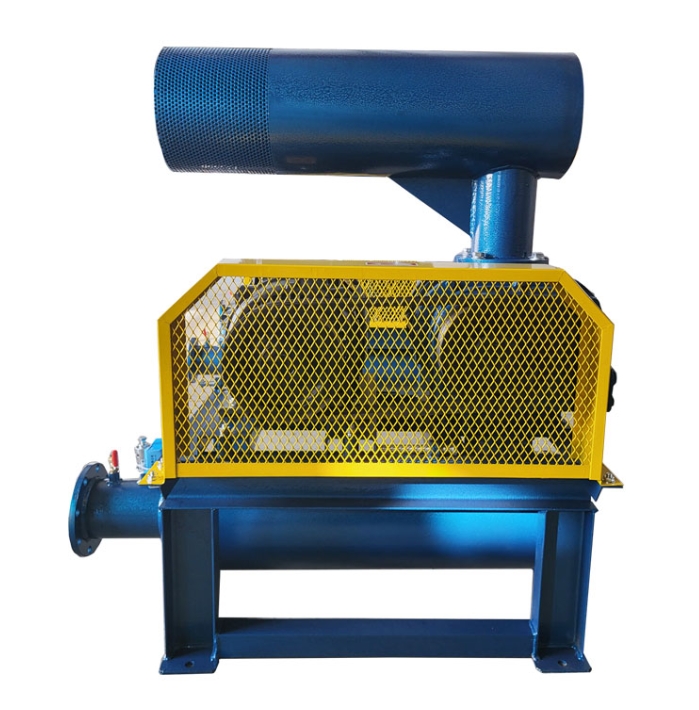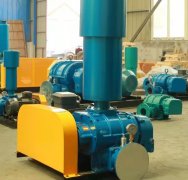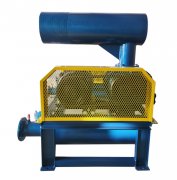Heating of Roots blower is a common problem, and there are various reasons for its heating. The following is a detailed summary of the causes of Roots blower heating and corresponding solutions:
The reason for the heating of Roots blower
1. Pressure holding:
Pipeline pressure build-up is one of the main factors causing high fan temperature. If the diameter of the pipeline is artificially changed, or if the pipeline is too long or has too many bends, it may cause pressure build-up, which in turn can increase the temperature of the fan.
2. Unfavorable working environment:
Roots blowers should usually operate inside the fan room, but in many cases they work in outdoor environments. The impact of high temperature weather on fans is particularly evident, as high ambient temperatures can lead to higher intake temperatures, which in turn can cause higher operating temperatures for fans.
3. Selection and configuration errors:
If the selection and configuration of Roots blowers are improper, such as using a low-power motor to drive a large fan, it is easy to encounter the situation of "a small horse pulling a big car". In order to meet the flow requirements, the fan operates at a high speed, which can cause the motor to overload and result in overheating of both the motor and fan.
4. Installation issues:
If there is a problem with the installation of the Roots blower, it may also lead to excessive fan temperature. For example, improper belt tightness or loose fixing screws may affect the normal operation of the fan.
5. Inadequate maintenance:
If the maintenance of the Roots blower is incorrect or inadequate, such as high or low oil level, blocked pipeline system, worn V-belt, etc., it may cause the blower temperature to be too high.
6. Incorrect operation:
Incorrect operation may also cause a sudden increase in exhaust pressure of the Roots blower, resulting in excessively high fan temperature. For example, valve closure, water level rise, pipeline blockage, etc. can all cause overpressure phenomena.
7. Assembly quality:
If the assembly quality of Roots blower is not too hard, it may also lead to excessive temperature during fan operation. For example, bearings with too little clearance or gears with too little installation clearance may generate excessive heat.
8. Fault wear and tear:
If the Roots blower malfunctions or wears out, such as friction between impellers, excessive gear meshing area, etc., abnormal friction between mechanical parts will generate a large amount of heat, causing the temperature of the blower to rise.
Solution measures
1. Adjust the pipeline:
Ensure that the diameter and length of the pipeline meet the requirements of the fan to avoid pressure build-up.
2. Improving the working environment:
If conditions permit, the Roots blower can be installed in the fan room and cooling measures can be taken. Alternatively, a soundproof cover equipped with a heat dissipation device can be installed to increase indoor ventilation.
3. Correct selection and configuration:
Choose the appropriate model and configuration of Roots blower according to actual needs to avoid the situation of "small horses pulling large trucks".
4. Correct installation:
Ensure that the installation of the Roots blower complies with specifications, and check whether the belt tightness, fixing screws, etc. are suitable.
5. Strengthen maintenance:
Regularly maintain the Roots blower and check whether the oil level, piping system, V-belt, etc. of the blower are normal. Timely clean the filter, replace worn parts, etc.
6. Standardized operation:
Strictly follow the operating procedures when using Roots blower to avoid overpressure caused by misoperation.
7. Improve assembly quality:
Choose a reputable Roots blower manufacturer to ensure excellent assembly quality of the blower.
8. Timely maintenance:
If the Roots blower malfunctions or wears out, timely repair or replacement of damaged parts should be carried out.



